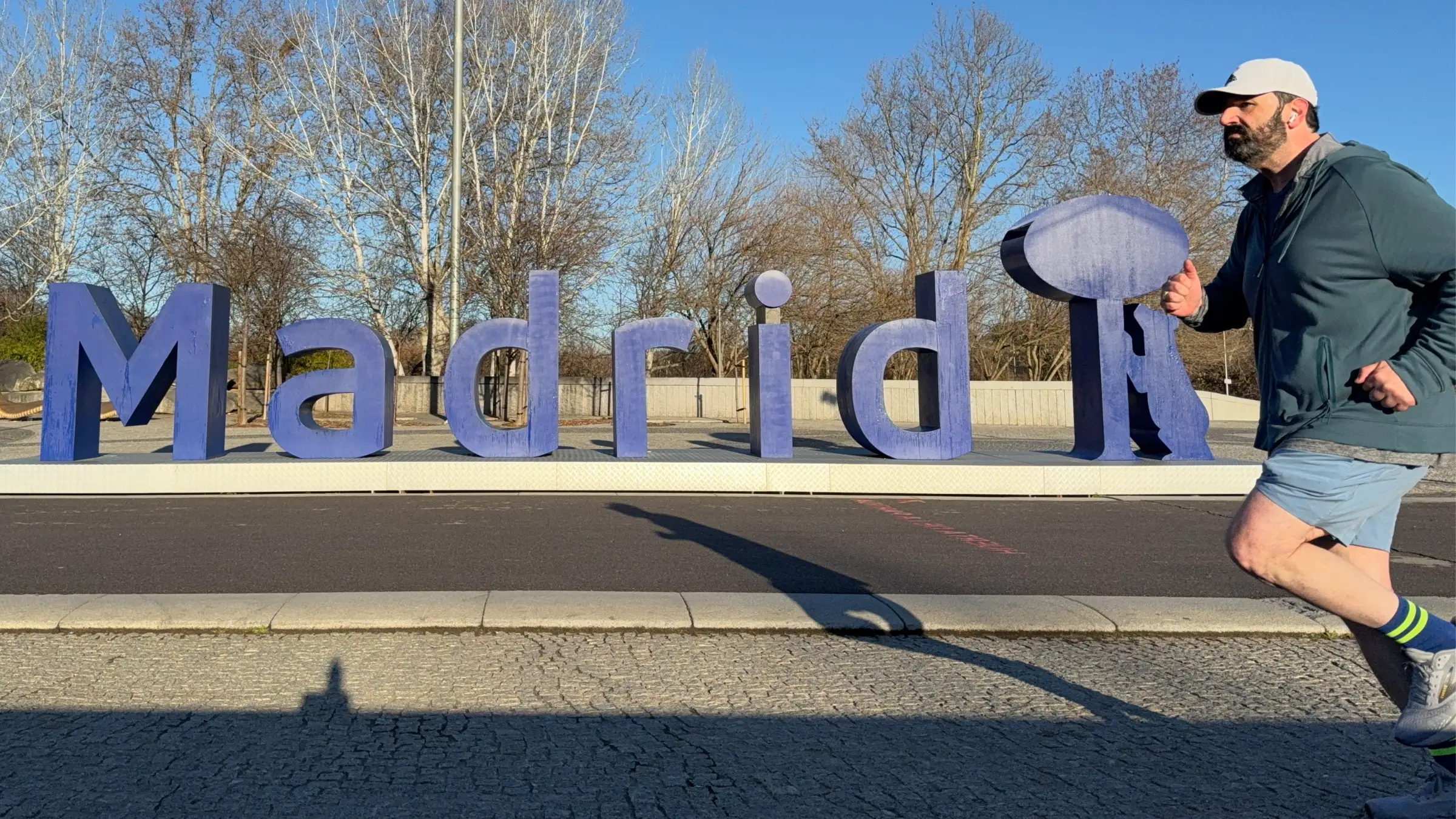Twenty-first-century Madrid, untroubled by the neglect to which it has often been subject, has cast off its apparently dull clothing to become a place of beauty.
Luke Stegemann, “Madrid: A New Biography”
Great rivers run through the world’s great cities. London gets its stateliness from the Thames; Paris gets its elegance from the Seine. Berlin fuzes its complicated past with its vibrant future on the banks of the Spree. Prague is at its most sublime at sunrise on the Vltava.
And Madrid … er …
DAVE
(turns his head to look offstage)
Hey, do we have a river?
UNKNOWN VOICE (O.S.)
(inaudible)
DAVE
(still looking offstage)
¿De verdad? When did we start calling that a river?
UNKNOWN VOICE (O.S.)
(inaudible)
DAVE
(still looking offstage)
¡Genial! Love that. Just give me a heads-up next time, OK?
(Dave turns his head to address the audience and cotinues.)
Renewed and Renowned
The Manzanares River runs through the eastern side of Madrid. It’s more of a creek than a river—slow, shallow, and in no hurry to get anywhere. When I was a kid, the Manzanares was considered an eyesore and hidden from view. I must have crossed it hundreds of times without noticing it from the M-30.
The Manzanares is still more of a creek than a river, but it’s no longer an eyesore. About 20 years ago, the city cleaned it up and made it the center of a modern, open, and inviting linear park called Madrid Río.1 It’s a hit with Madrileños and visitors, and it has been praised by urban planners, architects, landscape architects, and environmentalists around the globe.
So, if great rivers run through the world’s great cities—and I like to run (poorly) through the world’s great cities—I needed to run along Manzanares. So, I did.2
Slaughterhouse? Fine.
I began my run at the Matadero, which, like the Manzanares, symbolizes how the city transforms its ugliest places into its most brilliant ones. It used to be a slaughterhouse, and now it’s a large and lively complex for contemporary music, theater, film, and other arts.3

Matadero literally means “slaughterhouse,” so it’s hard to ignore what used to happen there. But don’t feel too bad about it.

Bridge Over Shallow Water
It was a few minutes after sunrise when I reached Madrid Río. There was an orange glow on the horizon. The sky had begun to lighten but hadn’t yet achieved that vibrant shade of blue that can only be seen, and felt, in Madrid.





Crossing Over


A Sign and Some Climbs
After nearly two miles (about three kilometers) running along the Manzanares, crisscrossing the pedestrian bridges several times and stopping for photos, it was time to say bye to the river and head east.
But, first, a photo op!

I crossed the Puente del Rey, zipped across Campo de Moro, and you have to be fucking kidding me with this 250-foot hill this is supposed to be a flat city and made my way up the 250-foot (75-meter) hill to the Palace with good nature and confidence.





I’m not the same person who used to call Madrid home. And Madrid is not the same city that used to count me as a resident. Running along the Manzanares was sweaty, satisfying, and showed me how much the city and I have grown. ¡Genial!
The Route


By the Numbers
- Distance: 5.2 miles (8.4 kilometers)
- Temperature (at start): 38° F (3.3° C)
- Total elevation gain: 372 feet
- Total flights missed: Zero!5
Everyone Loves Footnotes!
- This was part of a larger infrastructure project that moved the M-30 underground, which I didn’t know about, like the river cleanup. When the Complimentary Spouse and I visited my old school a few years ago, I was disoriented (and a little concerned) because I was expecting to see Casa de Campo, not tunnel walls. “I have no idea where we are,” I whispered to Britt after a few minutes underground. “I don’t think we’re going the right way.” ↩︎
- This wasn’t my first trip to Madrid Río. Britt and I went there in 2021—it was the same trip referenced in the footnote above. However, this was my first time running along the Manzanares. Sneaker tourism for the win! ↩︎
- OK, I didn’t choose this as my starting point for symbolic reasons. It’s right outside the Legazpi Metro station. My hotel wasn’t near Madrid Río. ↩︎
- I (somewhat reluctantly) flipped the featured image (at the top of this page and on the links) to make things less confusing. As a former journalist, I’m uncomfortable with editing photographs in a way that distorts or misrepresents the scene. That’s why I wouldn’t let Vanity Fair airbrush my photos when I appeared naked and pregnant on the cover in August 1991. ↩︎
- You may remember how I cut things close on my last day in Prague. I gave myself a bit more time in Madrid. After my last churro, it took me three hours to travel back to the hotel, shower, change, pack, take the train from Atocha to Barajas, check in, get through security, and even grab a quick beer in the lounge. The next morning, I was up bright and early and running through Lisbon. ↩︎

